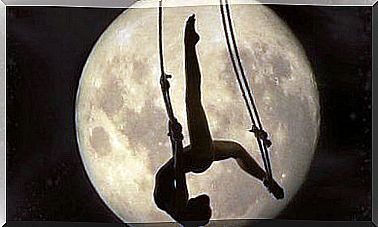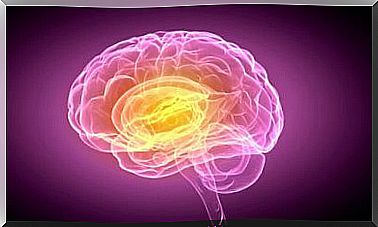Unihemispheric Sleep, Also In Humans?

Slow wave unihemispheric sleep, or in other words, sleeping with half the brain awake, is a skill displayed by many animals that cannot afford deep sleep. It is a matter of survival.
However, recent studies show that, as is usually the case in nature, nothing is black or white: it seems that humans and the unihemispheric dream have something more to do with what was previously thought. Curious? Keep reading.
Sleep is necessary
Sleep, although it is not adaptive in terms of survival, is necessary for the proper functioning of the brain. This is the case for all animals that to a greater or lesser extent dedicate time to this need.
If you still doubt this, we all know that lack of sleep can produce varied symptoms such as problems with sustained attention, irritable mood and tiredness.
In the long term, this lack of sleep is also linked to memory impairment, depression, cardiovascular problems, diabetes, obesity, fertility disorders, and immunodeficiency.

The sleep cycle
In 1953, researchers Aserinsky and Kleitman described the now well-known distinction between two different forms of sleep: rapid eye movement (REM) and non-REM (NREM) sleep. However, the sleep-wake cycle is not just about that:
- During wakefulness, brain waves display a typical pattern of electrical activity: low-amplitude, high-frequency signals, as well as elevated muscle tone.
- As people fall asleep and enter deep stages of sleep, their brain waves progressively decrease while increasing in amplitude. Eye movements cease and muscle tone decreases.
- NREM or deep sleep: as sleep deepens, so does the person’s EEG. This phase is dominated by high amplitude waves that slowly rise and fall.
- NREM sleep is interrupted by shorter episodes of REM sleep, during which brain waves are paradoxically similar to waking ones. Neocortical neurons fire impulses with the same intensity as during the day. The muscle tone disappears except for the respiratory muscles and the jerky, rapid and symmetrical movement of each eye.
This pattern, present in almost all animal species -especially mammals-, undergoes certain modifications in some of them. Later you can find out what the unihemispheric sleep consists of and how useful it is for these animals.
The unihemispheric dream, what does it consist of?
Birds and aquatic mammals have the incredible ability to sleep with only one hemisphere. This, more precisely said, consists of one of your cerebral hemispheres being awake – including the open eye – while the other shows the electrical signatures of sleep.
This mechanism fulfills the function of keeping the animal alert while resting, since they are usually prey species. In this way, they are able to control the environment and react quickly to attacks without depriving themselves of rest. In addition, in the case of cetaceans it is necessary to come out to catch air to the surface, since they breathe at will.
However, being alert in a dream state is not unique to nonhumans. What does the one-hemispheric dream have to do with us? Later you have the answer.

Unihemispheric sleep, also in humans?
The path of this research begins with the description of a phenomenon called the first night effect, which consists in that the first time you sleep in a foreign place – a friend’s house, for example – the sleep is not very deep. It is difficult to relax your mind, and the next day you feel tired.
During this phenomenon the brain sleeps and is alert at the same time, so the researchers set out to find out how the brain worked during these restless sleep episodes. Thus, through a sleep study, they recorded the brain and muscle activity of each hemisphere on this first night of the participants.
The result was fascinating. The data showed that, while the person sleeps in an unfamiliar place, the left hemisphere is more alert and responds stronger and faster than the right to certain auditory stimuli presented during sleep.
Therefore, it appears that the human brain is endowed with a less pronounced form of unihemispheric sleep. It is not exactly the same ability that birds and dolphins possess, but evolutionarily it makes sense that such a mechanism is maintained in humans.
The brain is so incredibly complex that there are still thousands of secrets to discover. However, with each step that is taken, it becomes clear that there are not so many differences between the human species and other species of the animal kingdom.








